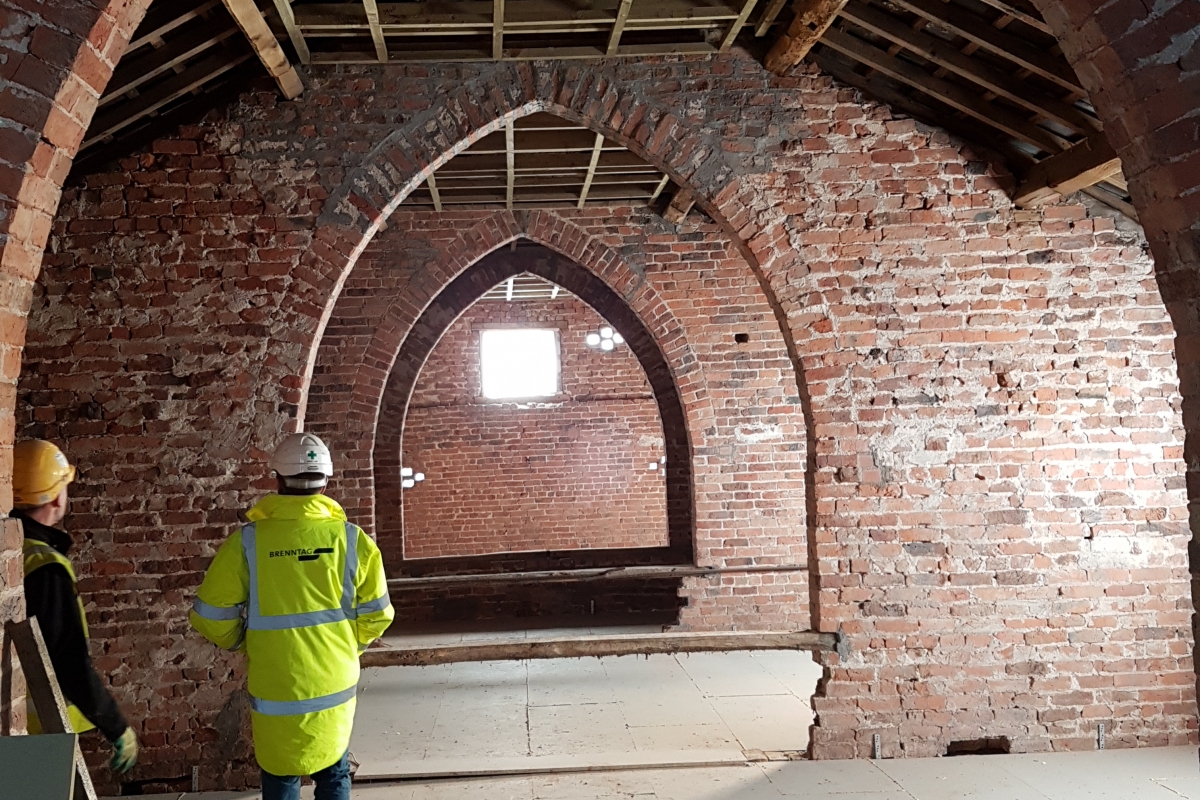Posted on 03/2/17 in Case Studies

Technical Manager, Andrew Latimer was recently asked to consult on a building with a multitude of issues. Registered Installers, Remedial Restorations and main contractor Rawlinsons contacted Wykamol Group for their expert knowledge on damp and timber, and Andrew Latimer rose to the challenge.
The collection of buildings located in Wythenshawe are part historic and therefore listed buildings. Implementing a design specification for rising damp and timber rot is always a complicated process when working with a conservation team, as is necessary when preserving listed buildings.
The buildings had suffered significant damage; the main hall had been subject to vandalism and a small fire, but the outer buildings fared better, with minimal damage aside from the obvious dampness and leaking roofs.
During the design process Andrew identified the need for a waterproofing scheme for one of the barns, as its 2 elevations fall well below ground level. A type C waterproofing scheme was approved based on BS8102 regulations. For this, Andrew recommended our CM8 Membrane along the walls and channels to divert any water away from the structure.
Rising Damp was present in each of the buildings on site, which had previously been used as animal housing and feeding areas. Andrew decided these areas needed an application of Ultracure Damp Proofing Cream combined with our Yellow Slimline Mesh Membrane system. The membrane system will help protect against any aggressive salts while still allowing the wall to breath. It is easily removable and Historic England demands that any alterations made to listed buildings must be reversible. The conservation team present at the evaluation were content that these guidelines were adhered to.
The biggest area of concern were the timbers, which in many areas had been seriously affected by rot. The main roof timber and bearing ends are oak, and in places so deteriorated they could not be saved, but a sympathetic timber treatment scheme was implemented to save as much of the original structure as possible. Wykamol Boron Gel was therefore recommended along with spray treatments for woodworm which had infested the timber.
To give a clear idea of the sheer scale of this on-going project, over 400 meters of membrane are yet to be installed. It provides a perfect example of Wykamol’s endeavour to protect and preserve our country’s heritage by combining our Technical Manager’s expertise with high-quality products.
If your home has beautiful historic features you wish to preserve, get in touch. Our knowledge in repairing buildings such as this goes back to Wykamol’s founding in 1934 and evidence of our products can be found in some of the most prestigious buildings across the UK.